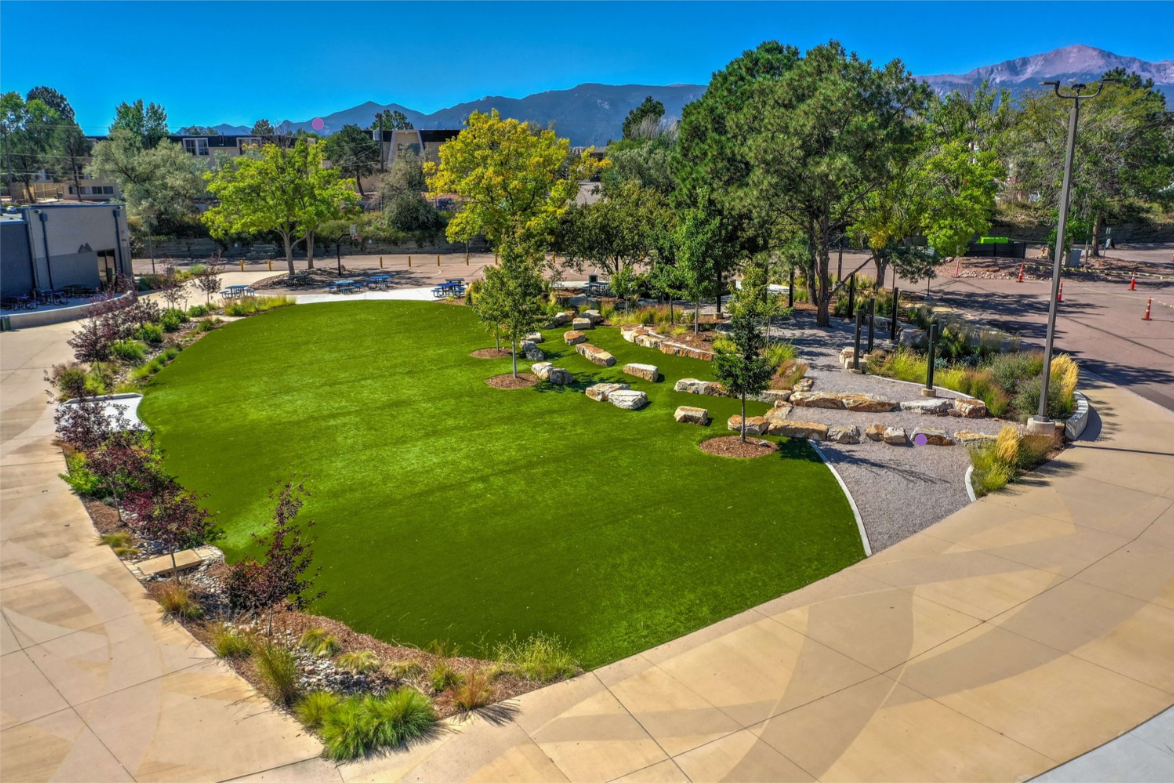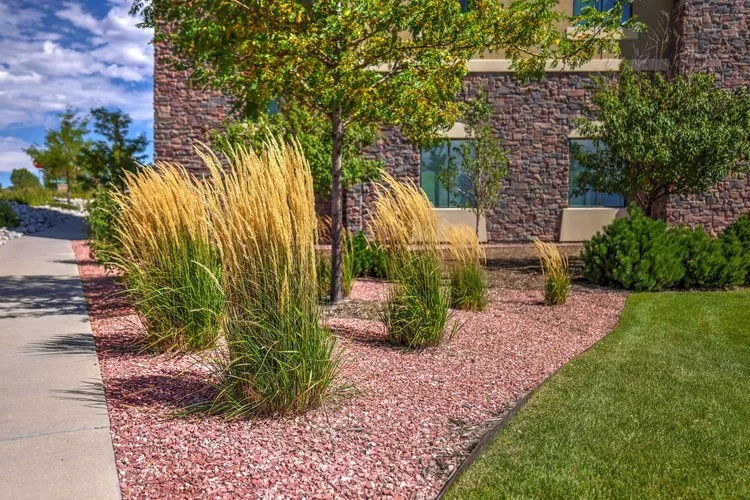Planning a Commercial Landscape Installation in Colorado Springs? Read This First.
5 Overlooked Factors That Cost Property Managers Time, Money, and Headaches
Designing a commercial landscape isn’t just about appearances. In Colorado Springs, it’s about dealing with sloped terrain, sudden hailstorms, strict water restrictions, and making sure your property doesn’t become a maintenance nightmare a year from now.
If you're planning a commercial landscape install—whether for a retail center, office park, or HOA—here’s what you actually need to know, from a team that’s seen it all.
1. Focus on Function First
Before you think about plants or pavers, get clear on what your landscape needs to solve. Some of the most common priorities we see in Colorado Springs include:
Fixing drainage near entryways and sidewalks to prevent ice hazards
Reducing high water bills from outdated turf-heavy designs
Creating natural buffers between parking lots and residential areas
Making spaces more inviting to tenants or customers without creating maintenance headaches
At Fisk Lawnscapes, we build your design around those goals—not trends.
Colorado Early Colleges Colorado Springs
2. Choose Materials That Work with the Elevation—and the Wind
The Front Range climate is unforgiving. We’ve replaced plenty of installations from out-of-town contractors who didn’t understand the altitude, soil, or wind load. Pretty doesn’t last if it’s not built for where we live.
Some pro tips:
Avoid grass in narrow medians—it’s hard to irrigate and mow, and usually dies
Use rock beds with geotextile fabric in erosion-prone areas (mulch just blows away)
Choose hardy, low-profile plants near high-traffic zones to reduce replacement costs
Cordera Community Center in Colorado Springs
3. Plan for Snow Before You Pour Concrete
We can’t tell you how many properties we’ve seen where walkways weren’t built with snow removal in mind. Snow piles up in the wrong spots. Meltwater refreezes. It’s a liability waiting to happen.
If snow isn’t considered during the design phase, you’ll be paying for it later—in both safety risks and cleanup costs.
What we do at Fisk:
Grade hardscapes so snowmelt drains properly
Leave access paths for plows and snowblowers
Design planting beds that won’t get buried or damaged by plowed snow
4. Plan It Right So It’s Easy to Keep Up Later
The most expensive landscape is the one that’s hard to maintain. We’ve seen installs where a tree needs to be pruned three times a year, or sprinkler zones aren’t mapped, so crews waste time (and water) guessing.
Smart design now saves you the budget later. At Fisk, we:
Map irrigation zones and plant locations clearly
Avoid overplanting just to fill space
Use ground covers and mulch beds to reduce weeding and trimming needs
5. Work with a Contractor Who Knows the Region—and Shows Up After the Install
Anyone can make something look good on install day. The real question is: Will it still look good after one Colorado winter?
Fisk Lawnscapes has served the Colorado Springs commercial market for more than 20 years. Our crews are trained in elevation-specific landscaping, water regulations, and responsive follow-up. We’re the team you call when you want it done once—and done right.
Reach out today to schedule a free site consult with one of our senior project leads.


